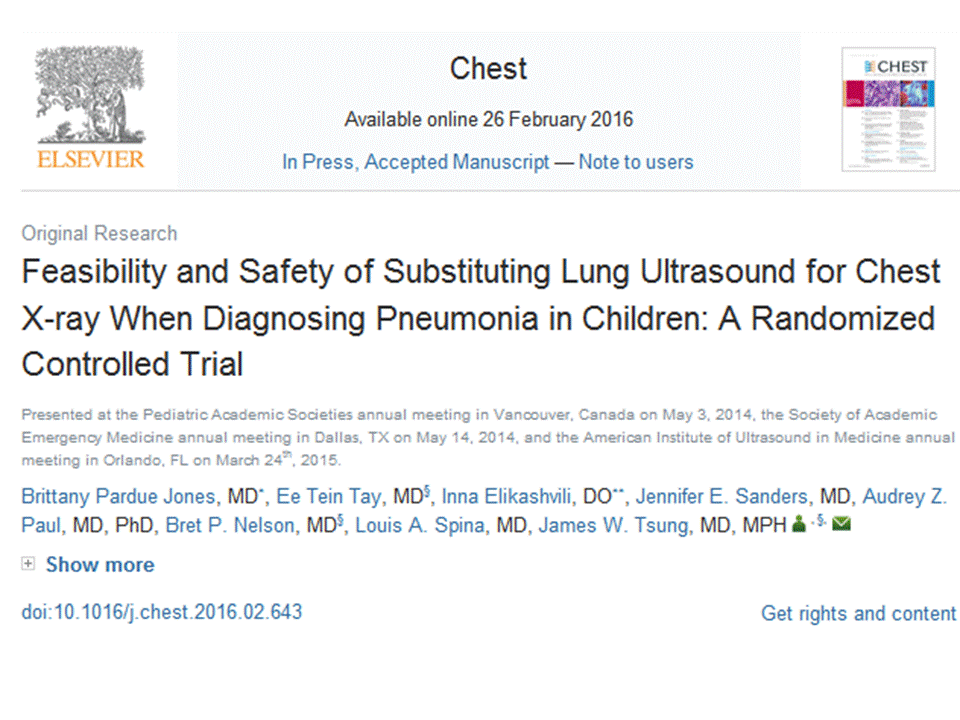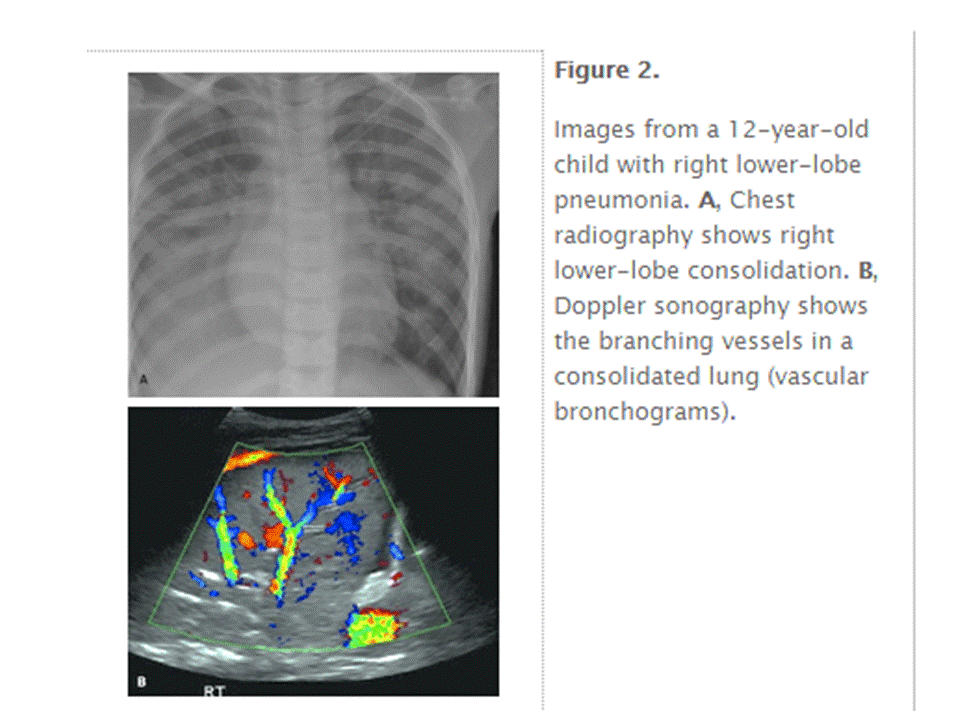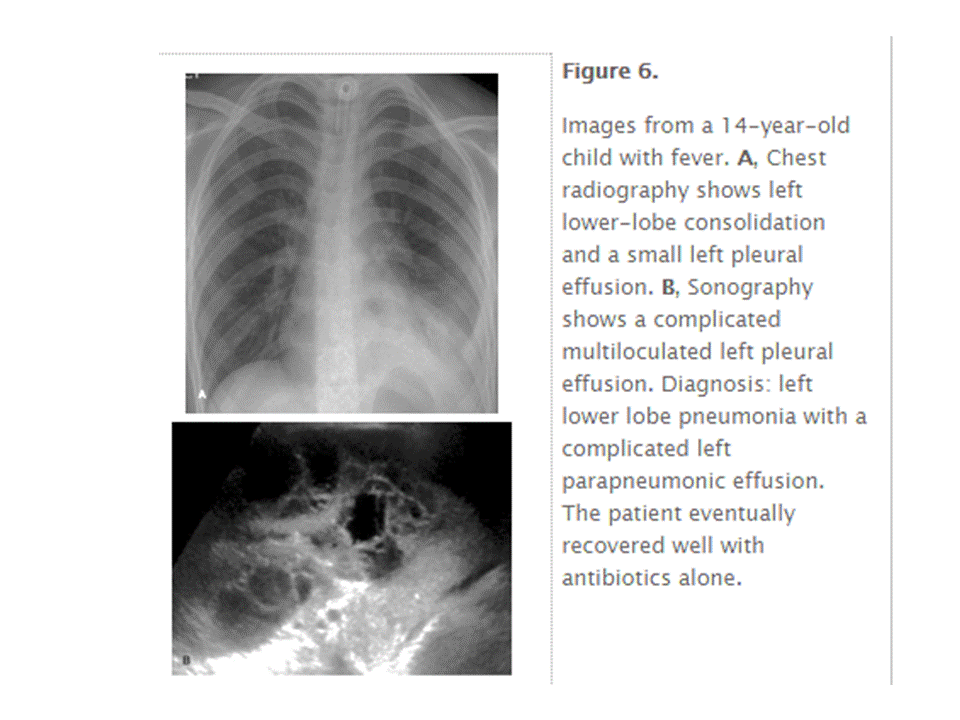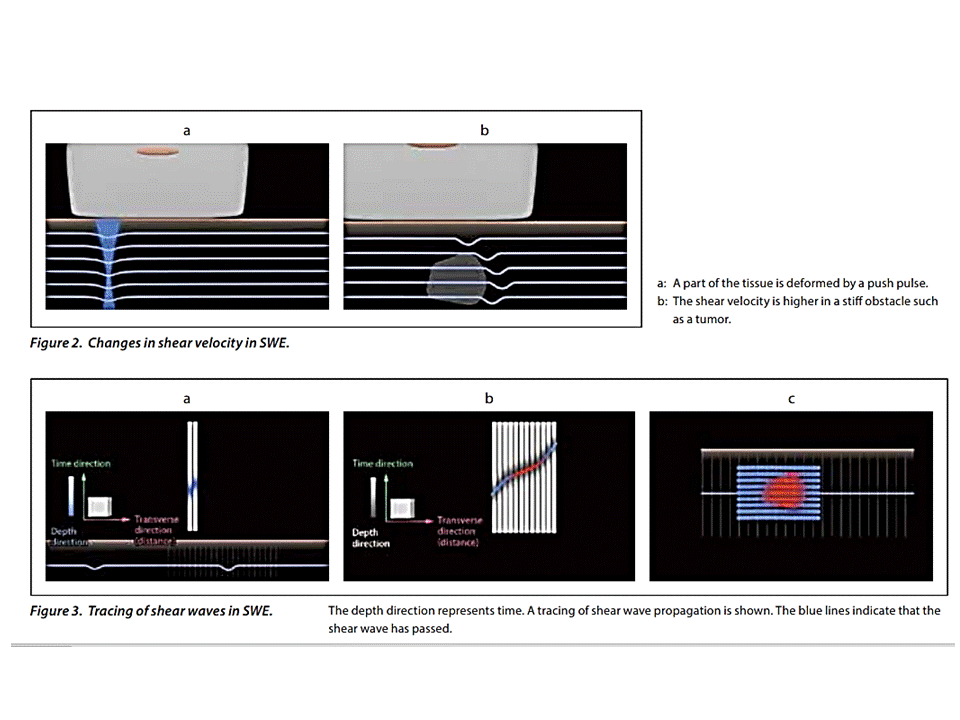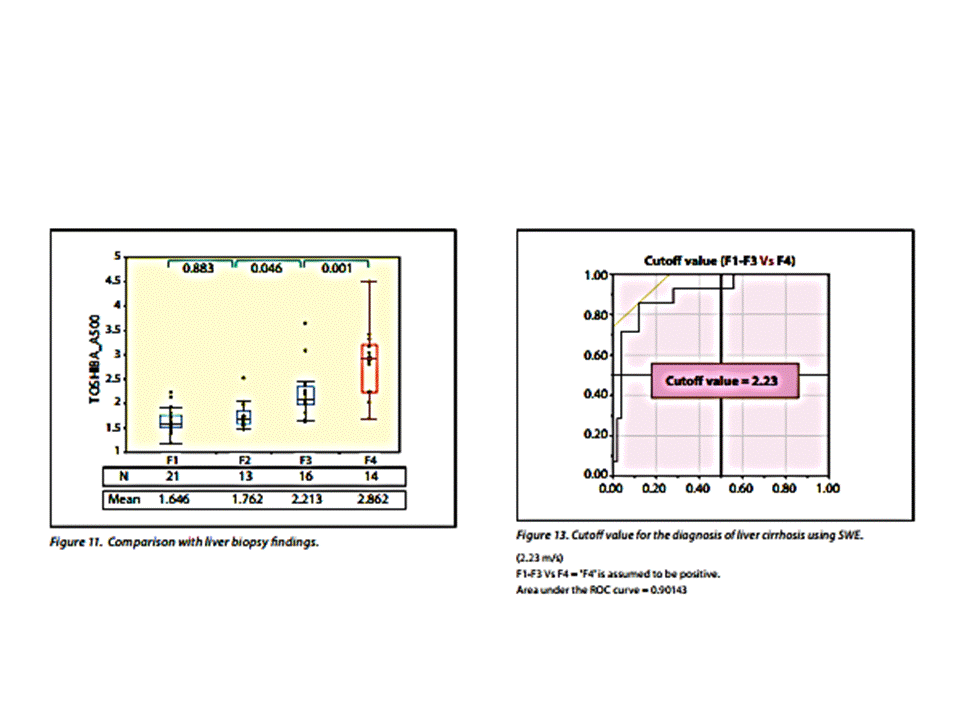CLINICAL
FINDINGS of ARFI in BREAST TUMORS
VO NGUYEN THUC QUYEN, PHAN THANH HAI, MEDIC MEDICAL
CENTER,
HCMC, VIETNAM
INTRODUCTION:
Breast Cancer is currently the top cancer among
women worldwide including Viet nam. Therefore, early detection plays a critical
role in clinical decision of management.
Besides Mammography and MRI, ultrasound has been a useful
modality in detecting breast tumors. Moreover, the combination with Color
Doppler significantly reinforces the B-mode diagnosis. Lately, new ultrasound
technique, elastography is providing more information to increase accuracy. However,
each one uses different method including compressed and non-compressed
technologies. Developing by Siemen, ARFI is a non-compressed elastography,
evaluates tissue stiffness base on replacement caused by acoustic radiation force impulse
(ARFI). In other words, tissue deformed and reformed under a force. The stifferness replaces less
compared with surrounding tissue in same depth. In clinical application, tumors
usually harder than healthy tissue.
AIMS:
To evaluate ARFI qualitative and quantitative assessment
to differentiate benign and malignant breast tumors.
METHODS
and MATERIALS
Patient
and Pathologic diagnosis:
From April to November 2015, we selected 85 breast
lesions classified as category 3-5 according to ACR Breast
Imaging Recording and Data System (BI-RADS). Two radiologists analyzed them in
the following steps before performed biopsy with final diagnosis (FNAC, Core
Biopsy, Excisional Biopsy). All images and biopsy procedures were performed at
Medic Medical Center Ho Chi Minh city. Exclusion criteria include:
·
Non histopathology confirmation
·
Male breast lesions
Imaging
methods:
Using linear probe 9L4 (9MHz) in Siemens Acuson
S2000, we applied respectively 2 modes:
·
VTI (Virtual Touch Quantification): an
gray-scale elasticity map within region of interest (ROI)
·
VTQ: (Virtual Touch Quantification):
quantitatively measure shear-wave speed (m/s) within non-resizable ROI. The ROI
was set in multiple point of the lesion to get the mean measurement.
Step 1: scan B-mode and Color Doppler images,
classified lesion using BI-RADS lexicon (shape, orientation, border,
echotexture, posterior feature)
Step 2:
Acquired Elasticity Score (E.S) in VTI mode then measure Area Ratio (proportion
between VTI lesion area and B-mode area). Base on VTI map, we classified
lesions with 5 elasticity score: Figure
Score
1: totally white
Score
2: mosaic (mix multi-shade of grey and white)
Score
3: black core with white or grey or mix
Score
4: totally or near to complete black
Score
5: totally black with black component out of lesion
Score1-3: low
suspect of malignancy
Score 4-5: high
suspect of malignancy
Step 3: Set ROI in 5 different points of the lesion
then measured Shear-wave Velocity (SWV) in VTQ mode. We calculated mean
velocity for each lesion. The ROI in VTQ mode are fixed with 5 x 5 mm in size.
When acquired velocity reach over 9.10m/s or computer is unable to get the
signal, we have X.XX m/s as value. [1] Figure 2.
Figure 2: Shearwave travels through hard tissue very
fast with > 9.10m/s (X.XX m/s value)
Statistic analysis:
We use SPSS version
16.0 to identified cut-off value and obtain ROC for best value of sensitivity
and specificity. Once we get cut-off value, we use t-student analysis to see
whether benign and malignant populations were statistically different.
RESULT
This study
was approved by the institutional review board and informed consent was
obtained from all participants. From April to November 2015, we selected
85 breast lesions including 59 benign (69.4%) and 26 (30.6%) malignant. Lesions
appear to dominantly locate in right breast 52/85 (61.2%), left 33/85 (38.8%).
The mean size 16.26 ±6.56 width and 9.64
±5.01 mm depth
Histopathologic
diagnosis
|
n (%)
|
Malignant: Invasive ductal carcinoma
|
26
(29.4)
|
|
|
|
|
Benign
|
59
(70.6)
|
Fibroadenoma
|
5
(5.9)
|
Mastitis
|
3
(3.5)
|
Intraductal papilloma
|
2
(2.4)
|
Fibrocystic change
|
46
(55.3)
|
Others
|
3
(3.5)
|
Total
|
85
(100)
|
Table 1: histopathlogic diagnosis of
malignant and benign breast lesions
ARFI analysis
-VTI:
a/
Elasticity Score (E.S)
|
Malignant
(%)
|
Benign
(%)
|
ES
1
|
0
|
0
|
ES
2
|
0
|
52.5
|
ES
3
|
0
|
47.5
|
ES
4
|
23.1
|
0
|
ES
5
|
76.9
|
0
|
Total
|
100
|
100
|
Table 2.1: ES Score frequency of malignant and
benign lesion
As the table 2.1, 26/26 cancer cases has ES 4-5 within
suspicious range.
b/ Area ratio (A.R)
Area Ratio
|
Sensitivity
(%)
|
Specificity (%)
|
1.06
|
100
|
27.2
|
1.13
|
96.2
|
52.5
|
1.20
|
88.5
|
64.4
|
1.34
|
88.5
|
94.9
|
1.40
|
84.6
|
96.6
|
1.44
|
84.6
|
98.3
|
Table 2.2:
As the table 2.2, the AR cut-off point would best at
1.34 with sensitivity 88.5% and specificity 94.9%. Area under ROC curve for
malignancy is 0.933.
-VTQ:
We excluded 8 malignant cases has SWV as X.XX m/s
SWV
|
Sensitivity
(%)
|
Specificity
(%)
|
2.20
|
100
|
69.5
|
2.24
|
94.4
|
72.9
|
2.32
|
88.9
|
79.7
|
2.41
|
83.3
|
83.1
|
2.49
|
77.8
|
88.1
|
Table 2.3:
As the table 2.3, the SWV cut-off point would best
at 2.24 with sensitivity 94.4% and specificity 72.9%. Area under ROC curve for
malignancy is 0.911.
DISCUSSION
The
ability of early detection
ARFI helps in differentiate malignant and benign
lesion. E.S score in VTI mode suggest suspicion are quite accurate in this
study (26/26). The gray-scale map not only distinguish big tumors but also in
small tumors as case demonstrated (Figure 3). It could greatly aid in early detection.
Figure 3: A DCIS 6
x 5 mm mass with BI-RADS 5 in B-mode and ES 5, infiltration is clearly
demonstrated which is not visible on conventional B-mode.
In term of
quantitative evaluation, Area Ratio reinforced E.S. It also shows a better the cancerous
infiltration in surrounding tissue than conventional method. In conventional
ultrasound, only when halo rings, architecture distortion, skin changes suggest
infiltration. However, those present in late stage while we are aiming for
early detection. (Figure 4)
Firgure 4: non-halo
tumors with AR=1.81 is better demonstrated the surrounding invasion
Our cut-off value
Our SWV cut-off
point at 2.24 m/are suitable for clinical practice. Other reference studies were
significantly higher (Yoon
Seok Kim et al: 4.23±1.09 m/sec [2]) as they considered all X.XX value as 9.10m/s.
We excluded all X.XX value since it not actually equals 9.10m/s.
Role
in clinical diagnosis
In clinical application, ARFI increases the accuracy
of B-mode and Color Doppler. It most value in BI-RADS 3-4a lesion which are the
borderline between benignity and malignancy. We recommended grade up from
BI-RADS 3 to 4A if all ARFI features are suspicious. However, here are some
exceptions. Acknowledged that some cancer such as Inflammatory Breast Cancer
(IBC) tends to be softer than normal tissue, reversely, some benign condition
like Mastitis can mask malignancy (figure 5). Our study limited in 85 case and
not included any IBC however caution should be made if specially AR> 1.34.
An interesting study was held by M.Teke et al. which used ARFI to compare Idiopathic
Granulomatous Mastitis with Breast Cancer
. Study shown significantly
different between their SWV (cut-off value 4.08m/s with 80.6% sensitivity,
86.4% specificity). It is important not to miss cancer but still minimalize
invasive option. EFSUMB also recommend this concept but less certain in down
grade. In some situation, we can down grade 4A lesion if the technique done
right, such as circumscribed lesion with suspicious Doppler pattern or
posterior feature. ARFI also helps guiding FNA procedure as we puncture the
hardest points in the lesion on VTI map.
Figure
5: Mastitis lesion in 60 years old patient, BI-RADS 4C E.S 2, AR=1.1 and
VTQ=1.58m/s
Technical recommendation
CONCLUSION
Overall, ARFI is a useful tools for diagnosis and
biopsy guidance breast tumors. The technique is simple since it is non-compressed
and repeatable. It cannot replaced biopsy but reinforced conventional
ultrasound. This is a promising technique helps avoiding invasive diagnosis if
we use it right and well-combined with other features.
REFERENCES:
1/ Wojcinski
S, Brandhorst K, Sadigh G, Hillemanns P, Degenhardt F. Acoustic radiation force
impulse imaging with Virtual TouchTM tissue quantification: mean
shear wave velocity of malignant and benign breast masses. International
Journal of Women’s Health. 2013;5:619-627. doi:10.2147/IJWH.S50953.
2/ Kim
YS, Park JG, Kim BS, Lee CH, Ryu DW. Diagnostic Value of Elastography Using
Acoustic Radiation Force Impulse Imaging and Strain Ratio for Breast Tumors. Journal
of Breast Cancer. 2014;17(1):76-82. doi:10.4048/jbc.2014.17.1.76.
3/ M.
Teke, M. Gümüş, F. Teke. Combination of elastography and tissue quantification
using the acoustic radiation force impulse technology for differential
diagnosis of Idiopathic Granulomatous Mastitis with Breast Cancer. ECR 2015 http://dx.doi.org/10.1594/ecr2015/C-1835
4/D.
Cosgrove1, F. Piscaglia2, J. Bamber3. EFSUMB Guidelines and
Recommendations on the Clinical Use of Ultrasound Elastography.Part 2: Clinical
Applications. Ultraschall in Med 2013
DOI: 10.1055/s-0033-1335375





